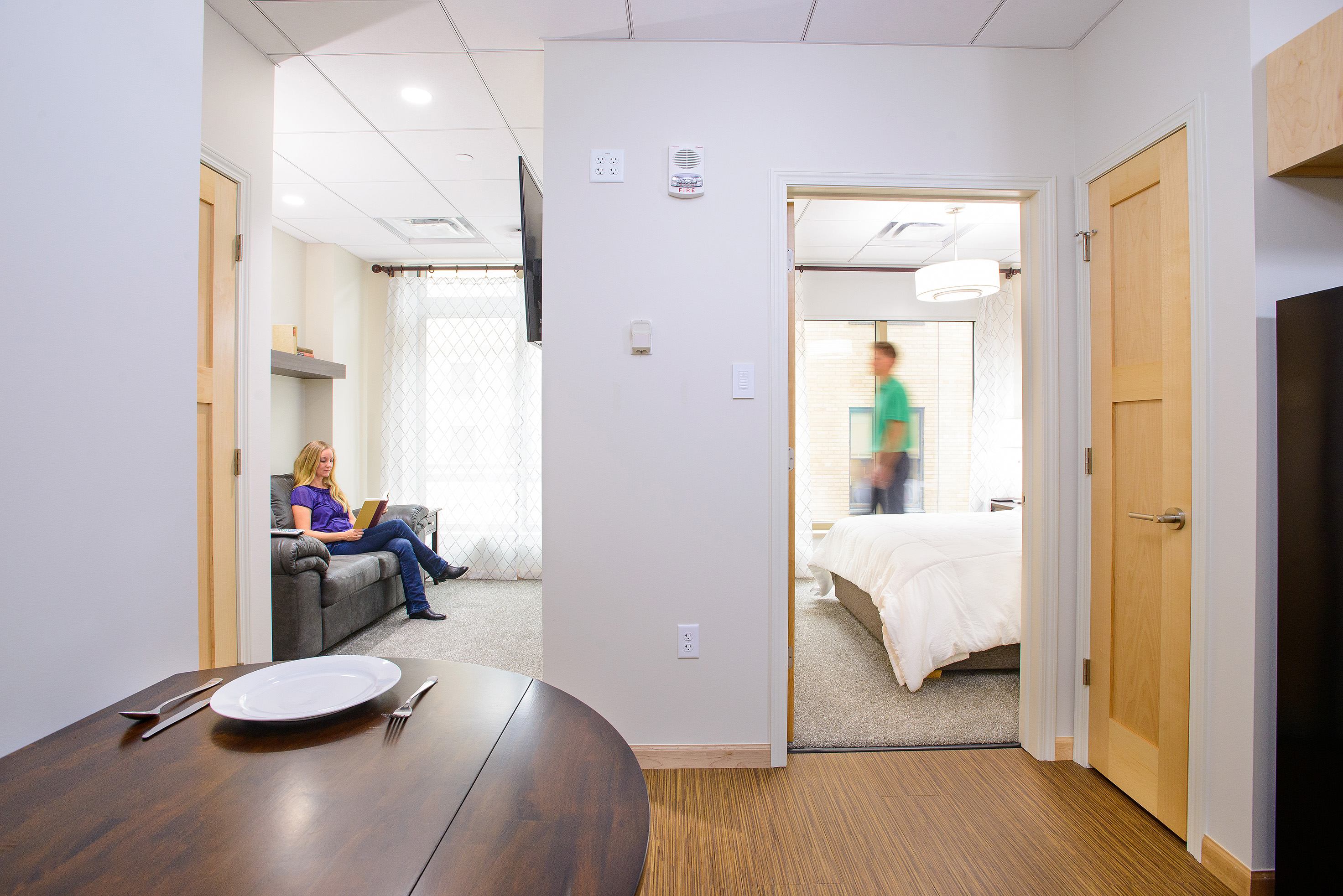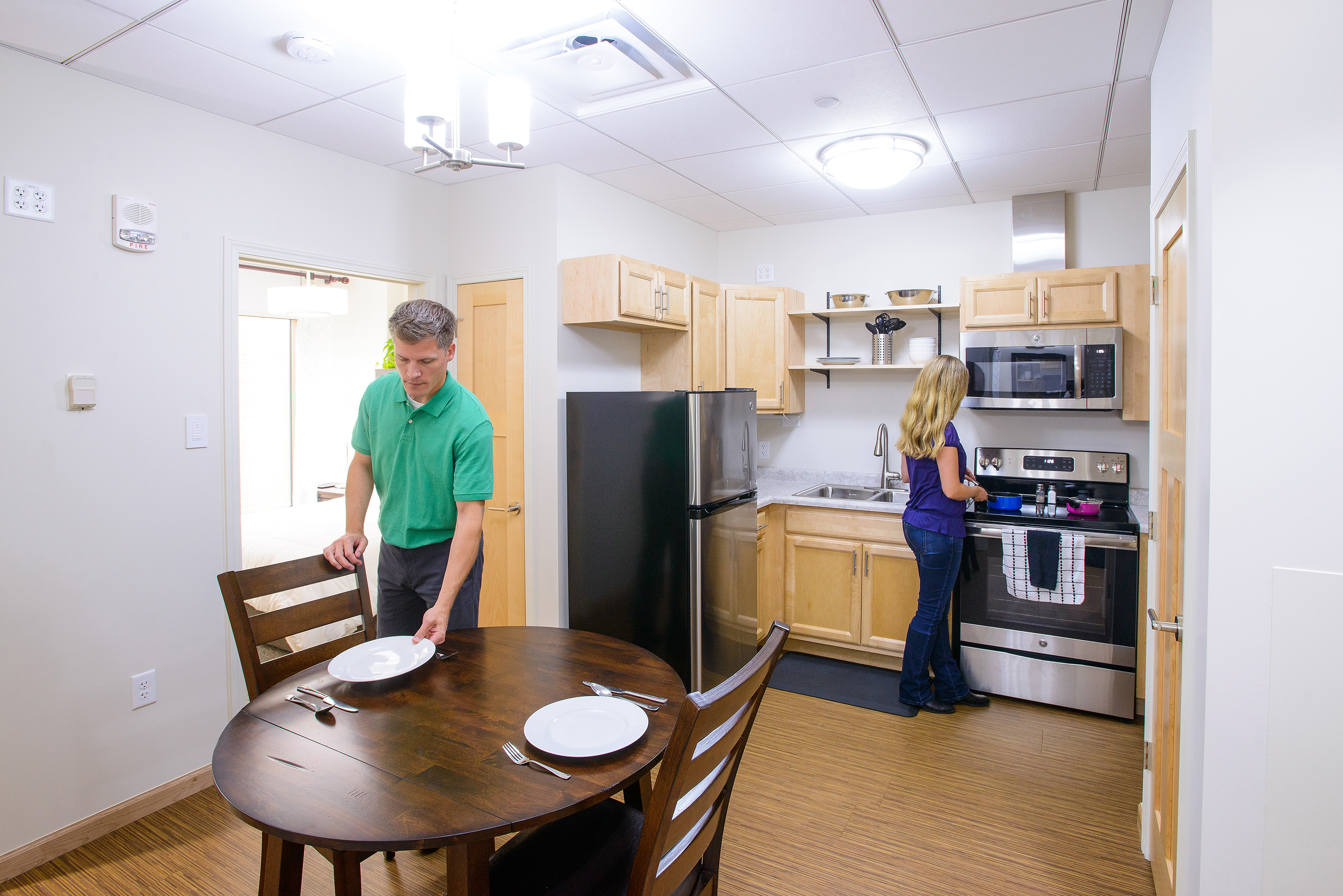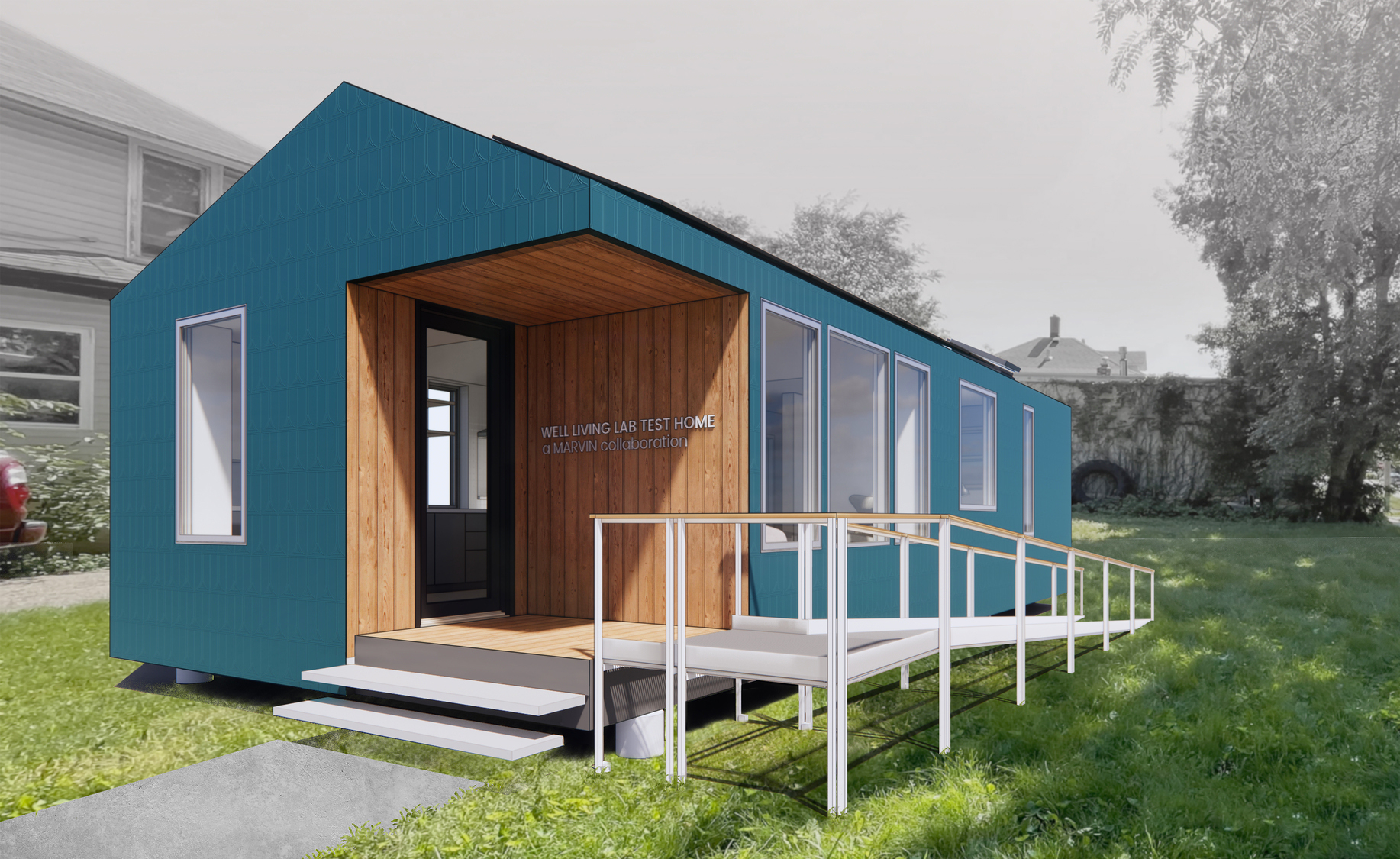Since its start in 2016, Well Living Lab has studied the impacts of indoor environments on human health and well-being. Founded as a collaboration between Delos and Mayo Clinic, Well Living Lab brings together building science and health science.
Located in Rochester, Minn., the lab features reconfigurable research modules outfitted with sensors that indicate how changes in the indoor environment—from temperature to air quality—affect human subjects. For example, Well Living Lab has found that access to natural light and biophilia (or plants and other natural elements) can reduce stress, improve satisfaction, and bolster productivity. Its research also has shown that air-filtration devices can reduce exposure to harmful air pollutants from cooking.
“Our mission is to advance health and well-being through science-based solutions that try to improve how we live, work, learn, and play,” says Barbara Spurrier, executive director, Well Living Lab, and executive vice president, Delos. “We spend over 90% of our time inside, so indoor environments have become vehicles for health and well-being.”
HOME HEALTH, BIOPHILIA, AIR QUALITY TESTS
The scientific research center, which sits adjacent to Mayo Clinic, has about 1,400 devices, 450 sensors, and 5,500 square feet of research modules that can be reconfigured into offices, classrooms, and residences.
But the lab’s residential configurations can only get as big as a small apartment.

That will change in mid-2023, when the organization, in collaboration with Marvin, opens the Well Living Lab Test Home. The new facility will allow Well Living Lab’s multidisciplinary team of scientists and technologists to study how environmental factors affect people within a whole-home setting. At 750 square feet, the home will include two bedrooms, one bathroom, a living area, a kitchen, and a study.
“The test home will feature state-of-the-art technology and design to look at the interaction between indoor environmental quality and human health outcomes,” Spurrier says.
Like the research modules at Well Living Lab, the test home will have a variety of sensors in the floors and walls, while subjects will wear biometric sensors. In the smart, connected test home, researchers will manipulate conditions such as air quality, temperature, lighting, and biophilia to determine how they affect human health and performance. Researchers will monitor subjects’ heart rate, blood pressure, cognitive performance, sleep quality, and stress. Other home features, such as solar panels and a multizone heating and cooling system, also will inform the research.
The test-home studies will focus on three themes—healthy aging, healthy living, and healthy working—specifically among the pre-retirement population. The pre-retirement focus, Spurrier says, stems from global aging trends. “We’ve never seen anything like this before,” she says of the world’s aging populations. (By 2050, the global population of people aged 60 years and older will double to 2.1 billion, according to the World Health Organization.)
Each of the test home’s studies will typically range from 6 to 12 weeks—long enough to achieve statistical significance but short enough to “keep a rapid cycle of learning,” Spurrier says.

Well Living Lab’s science-based research could influence future home technologies and products, Spurrier says. For example, Marvin, a Minnesota-based window and door manufacturer, could use the findings to identify solutions that enhance well-being through light, air, and views. The test home might leverage Marvin products such as Awaken, a smart skylight that can open on all four sides and automatically closes when it detects rain. (Marvin is one of over 20 organizations that form the Well Living Lab Alliance, a global cohort that includes Johnson Controls, KB Home, Mitsubishi Electric, and Panasonic.)
The research findings also could inform future versions of the WELL Building Standard, which Delos established almost a decade ago.
The Well Living Lab Test Home will be located in downtown Rochester as part of the Destination Medical Center (DMC), a 20-year, $5.6 billion public-private development that aims to make Rochester a global medical destination center. The DMC “tries to position Rochester as America’s city for health,” Spurrier says.
Often ranked one of the country’s top medical centers, Mayo Clinic is at the center of the DMC plan. Mayo Clinic is also vital to Well Living Lab: Several team members, including its research director and the chair of its scientific advisory council, have Mayo Clinic positions.






